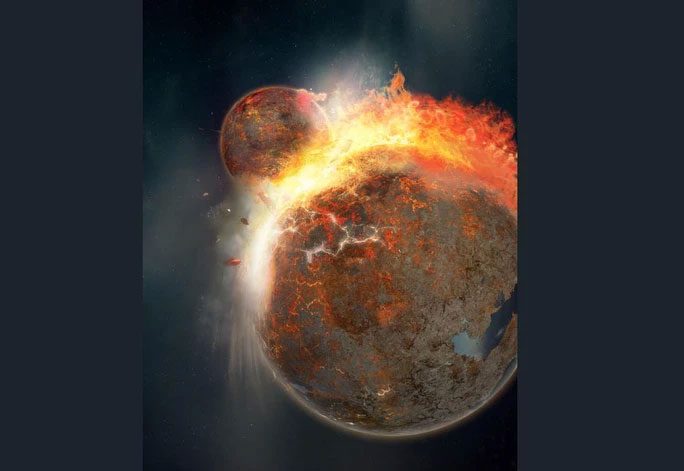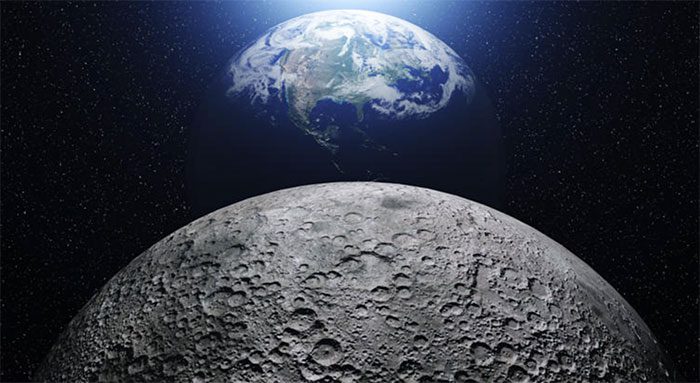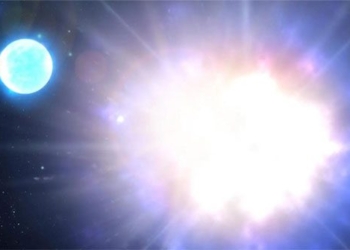Scientists have revealed that the mysterious mass discovered deep within the Earth’s core is the remnant of an ancient planet that collided with Earth billions of years ago.
New simulations led by a research team from the California Institute of Technology (Caltech, USA) indicate that the remnants of the ancient planet Theia, in addition to the debris that has mixed into Earth and the Moon, include two large, intact pieces buried deep within the Earth.

The collision of Theia with primitive Earth “Gaia” – (Graphic Image: Hernán Cañellas).
Theia – named after the Greek goddess Theia, mother of the Moon goddess Selene – is a hypothetical body about the size of Mars that once existed as an independent planet in the Solar System.
The hypothesis suggests that it collided with primitive Earth around 4.5 billion years ago and was obliterated. The materials from both planets mixed together, with debris ejected into orbit coalescing to form the Moon.
Meanwhile, the “ultra-low velocity zones” are two mysterious structures the size of continents, located deep in the Earth’s mantle (the layer beneath the crust) beneath Africa and the Pacific Ocean, discovered since the 1980s through seismic data.
They are often referred to as “blobs,” with distinct colors represented in three-dimensional maps describing the “interior” of the planet.
There are many hypotheses surrounding these two “blobs.” The two most prominent theories are: they are remnants of ancient tectonic plates, or they are remnants of an ancient celestial body that once mixed with Earth.
“The collision seems to be the source of the heterogeneity of the primitive mantle and marks the starting point for Earth’s geological evolution over the past 4.5 billion years,” said Professor Hongping Deng from the Shanghai Astronomical Observatory, a member of the research team.
Professor Steven Desch from Arizona State University (USA) added: “The Moon appears to contain materials representative of both Earth and Theia before the collision, yet it was previously thought that any remnants of Theia had been erased and homogenized by billions of years of dynamics.”
Therefore, the new study published in the journal Nature demonstrates that distinct, intact pieces of Theia still exist, hidden by Earth within the mantle, right at the boundary with the planet’s core.

The ancient planet Theia may have collided and mixed into Earth billions of years ago. (SCREENSHOT FROM MSN).
“In other words, Earth doesn’t just have “blobs.” Earth also has off-world blobs!” said Professor Ed Garneo from Arizona State University.
Postdoctoral researcher Qian Yuan at Caltech, who led the study, also has many theories about what happened to Theia and how it collided with Earth. Yuan and the research team determined that the collision could have formed the Moon and the mass within Earth. The crust of Theia could also have merged into Earth’s crust, solidifying and forming massive bodies.
Geology and geochemistry professor Paul Asimov, also at Caltech, argued that with such a hypothesis, further investigation is needed into how this formation affected the early evolution of Earth, such as the initial subduction phase before conditions became suitable for tectonic plates, the formation of continents, and the origins of the oldest minerals.





















































